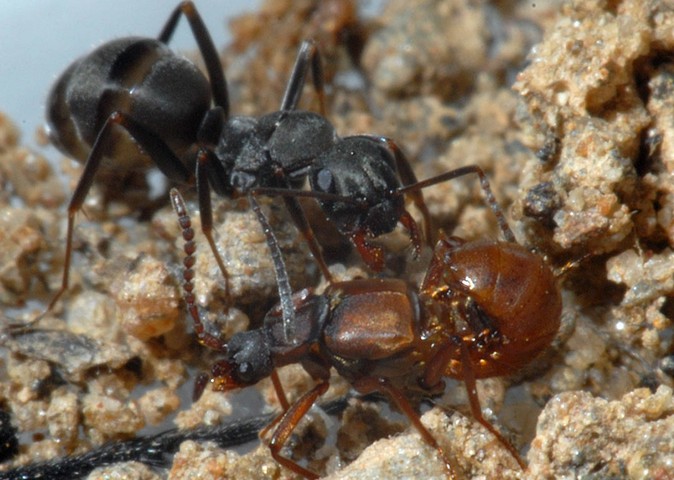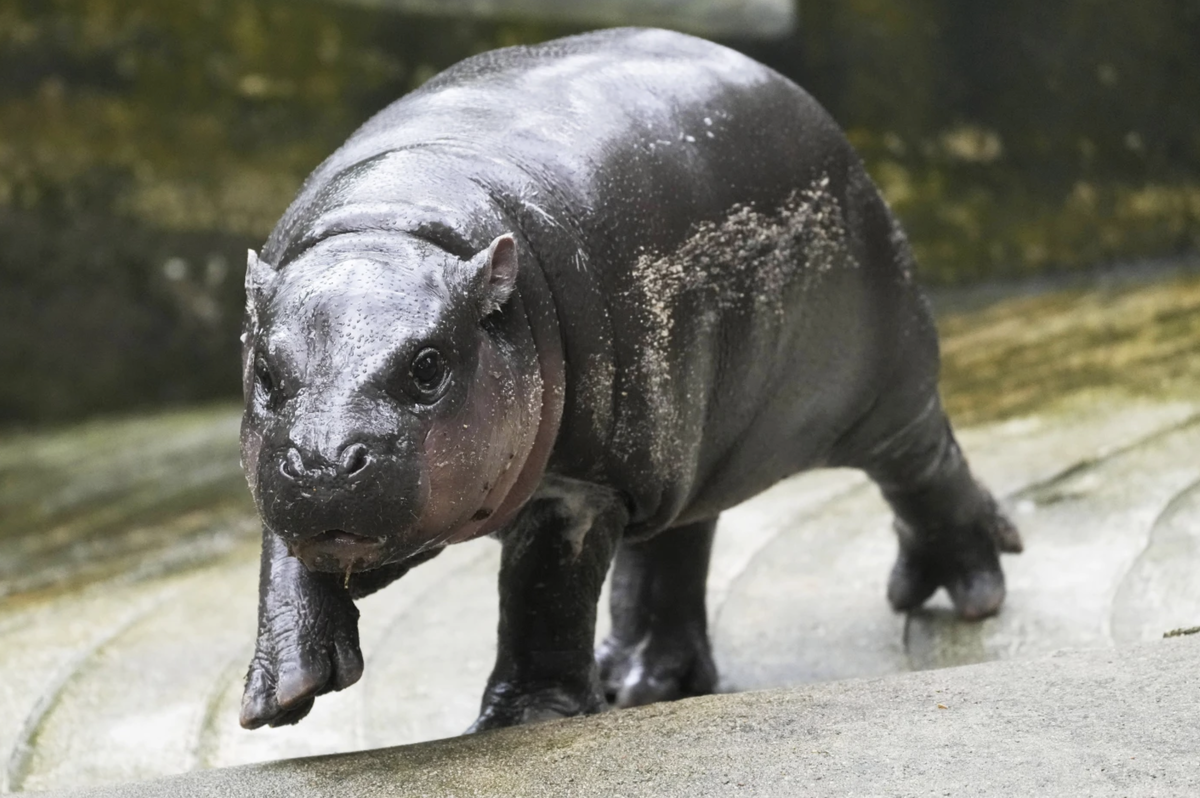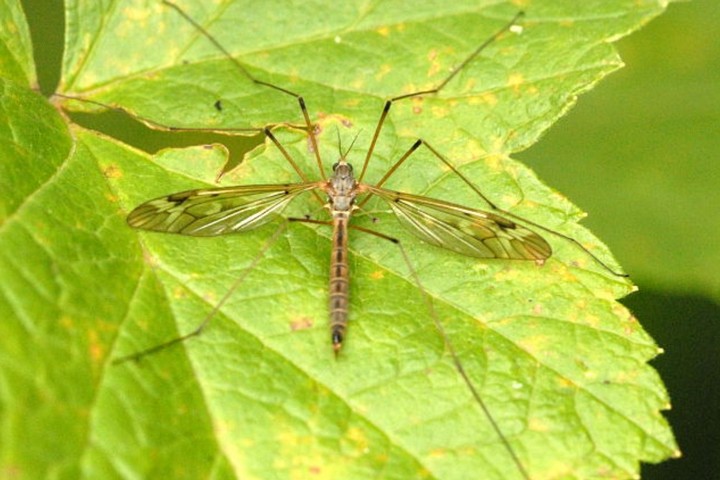Lomehuza: A small beetle with great destructive power.
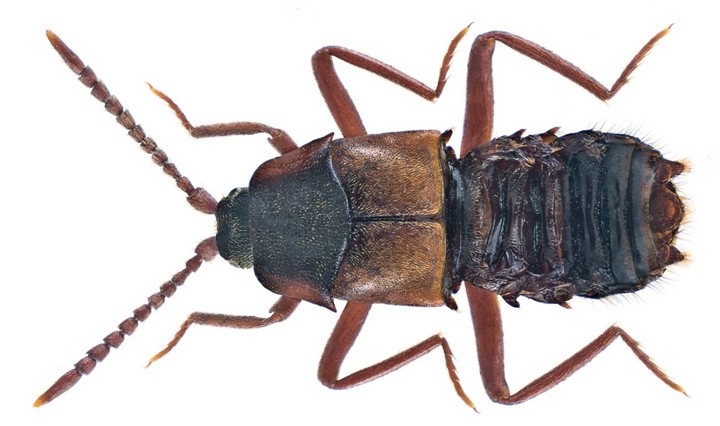
Imagine: an insect the size of a tiny grain of rice—about 5 mm—is capable of destroying an entire ant colony. It sounds like science fiction, but it’s the true story of the lomehuza, a parasitic beetle whose “power” lies not in its bite, but in its silent chemistry and flawless deception.
Master of Disguise: How the Lomehuza Gets into an Anthill
The lomehuza is almost invisible—its appearance vaguely resembles an ant, and this is often enough to slip past guards. But its main weapon isn’t its resemblance, but its biochemical cunning: the female chooses the moment and place, enters the anthill, and lays her eggs right among the real ant nests. The lomehuza’s eggs are so similar in shape and appearance to those of ants that the workers mistake them for their own and begin caring for them.
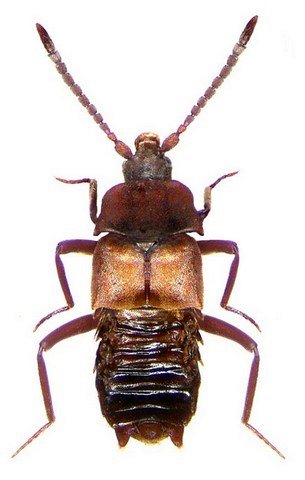
“Drug” on the bristles: the psychochemistry of the parasite
The lomechusa’s key trick is the exudate secreted on its body bristles. This isn’t a poison in the traditional sense: the substance acts as a powerful behavioral modifier. Ants, after sniffing and licking these microdroplets, enter a state similar to intoxication or deep tranquility. Their defensive reactions are dampened, aggression subsides, and the beetle gains free access to the nest’s interior.
How larvae turn an anthill into a “farm” for themselves
When the Lomechusa larvae hatch, the manipulation process continues and intensifies. From the very first days, they secrete a similar exudate, and the ants begin to treat them as their own, feeding, warming, and protecting them. The role of protectors and providers shifts entirely to the parasites. Gradually, the anthill’s resources are redistributed: the Lomechusa larvae receive more and more food, while the ants’ own offspring are neglected.
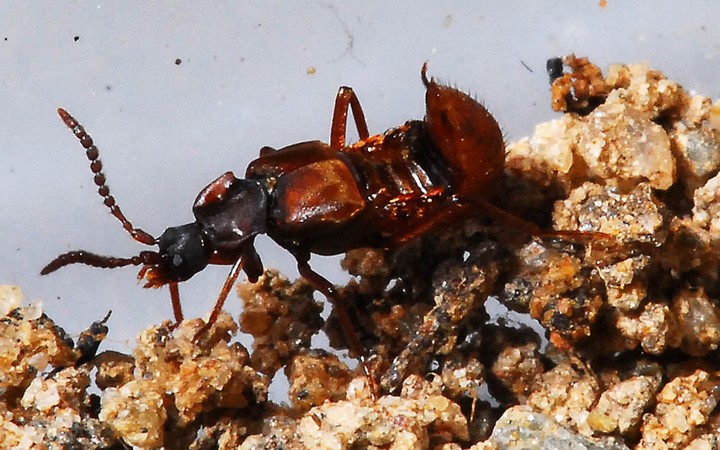
Degradation and destruction of society
As the ants expend energy on “addiction treatment” and caring for other people’s young, their performance declines: they lose their work skills, and their foraging and defensive efficiency declines. The colony gradually begins to decline—until the point where it can no longer restore its former order. This is how one tiny buzzing creature turns an entire ant civilization into an empty shell.
Survival strategy: changing victims and temporary immunity
The Lomehusa does not live “forever” in one anthill. In the spring and summer, it selects one host species, and in the fall, it moves to another—literally relocating its “center of activity” as the previous colony dies out. Another interesting observation: anthills that have survived a Lomehusa invasion and managed to clear themselves of the parasites temporarily exhibit resistance to their effects—a kind of “collective memory” or altered behavior that prevents reoccupation for the immediate future.
Sometimes ants care for the Lomechusa larvae even more zealously than they care for their own offspring—so strong is the craving for exudate and its calming effect. This is a sad illustration of how chemical manipulation can override evolutionarily developed instincts: the instinct for care becomes an instrument of destruction.
Evolution without brute force: a miniature chthonic parasite
The lomehuza is a classic example of how parasitism can operate not through force and toxicity, but through skillful manipulation of the host’s behavior. In ecological terms, it is a chthonic parasite: a small creature operating at the root, “underground” level of society. This type of parasitism is interesting not only in itself, but also as a model for studying the neurochemistry of behavior and mechanisms of social regulation in insects.
Why is this important to know?
The history of the lomehuza demonstrates that even the most seemingly resilient communities are vulnerable to subtle biochemical attacks. For scientists, this is a reason to study the molecules that alter behavior and to seek ways to protect beneficial insect social structures—including ant farms and ecosystem-critical populations. For us, it’s a reminder that threats in nature aren’t always loud and obvious: sometimes destruction occurs quietly, from within.
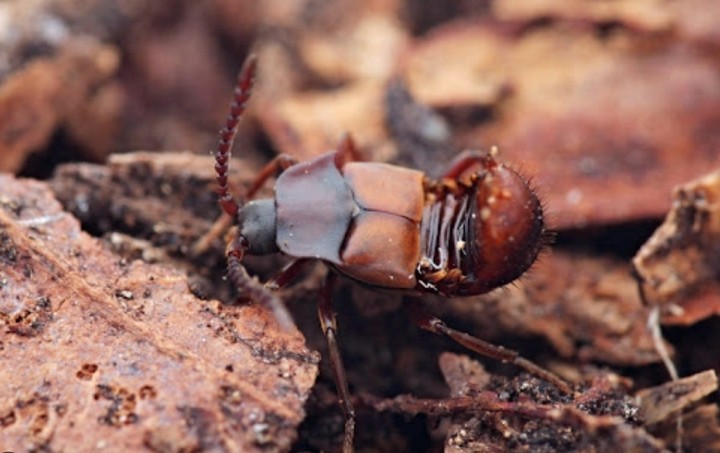
Lomehuza is not an ancient monster, but a “destruction machine” fine-tuned in size and tactical power. Its history is one of how chemistry and behavioral manipulation can replace the fist. This is another reason to look at the insect world without condescension: where strength and numbers seem to rule, the one who best reads the minds of others prevails.

